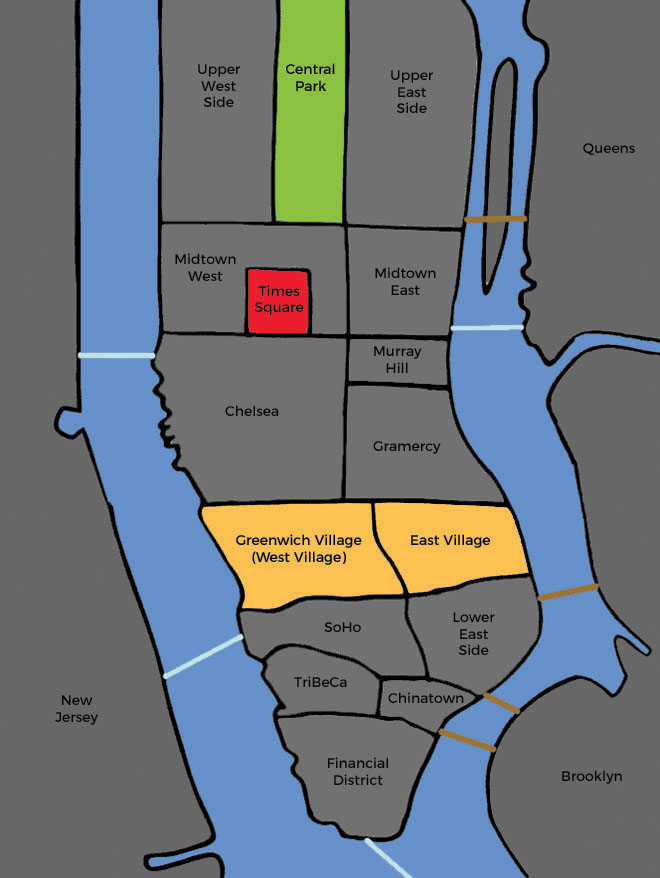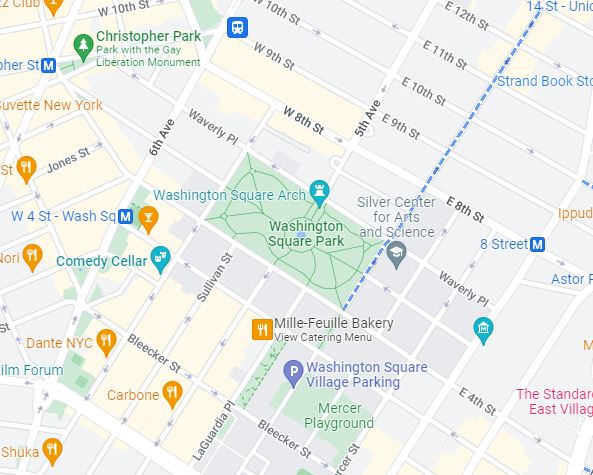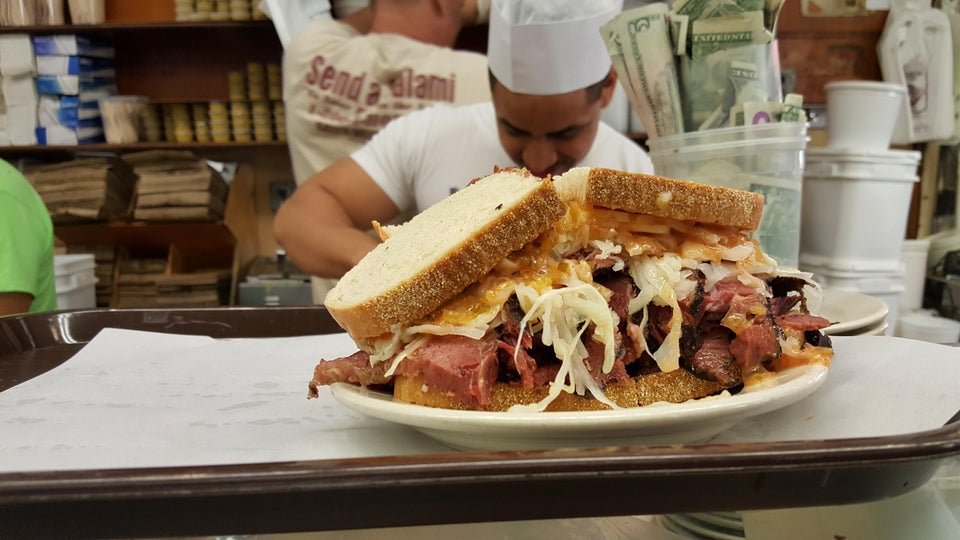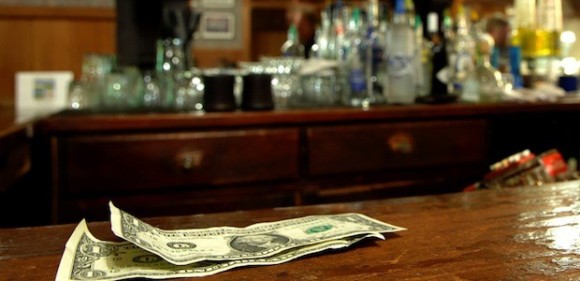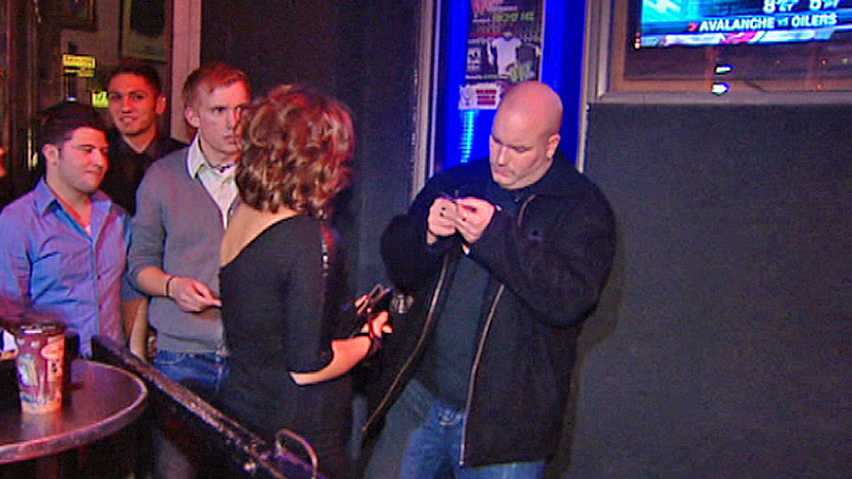EAST VILLAGE Although increasingly gentrified with former heroine dens that are now modern apartments so hip you can’t afford them, it remains an ethnically diverse area of students, young professionals, and older longtime residents. This colorful neighborhood is full of good values in food as diverse as its population, and there’s always something happening on St. Marks Place, 24/7.
Many opposites coexist peacefully in the East Village: dive bars and craft-cocktail dens, Ukrainian diners and the latest chef-driven restaurant, stylish boutiques and counterculture stores. Famous for its nightlife, the East Village has become increasingly more upscale in recent years with St. Marks Place trading in some of its grit for a population of students, well-earning post-grads, and international expats. At its roots, the neighborhood is a community of artists, activists, and social dissenters—and though this is still the essential vibe here, the finish is much more polished these days.
WEST VILLAGE Greenwich Village (aka the “West Village”) was once a large industrial park; later, it was colonized by radicals, bohemians, beatniks, artists, and literary greats squatting in abandoned factories. High rents exclude most of their ilk today (their counter-cultural counterparts are NYU students) but the Village (as it is known) still has its charm.
Greenwich Village, home to a vibrant artistic and literary community in the 1950’s, occupies the space between Houston St and 14th St. The central portion surrounds Washington Square Park and includes NYU’s large campus and a thriving nightlife scene.
The West Village historically was known as an important landmark on the map of American bohemian culture in the early and mid-twentieth century. The neighborhood was known for its colorful, artistic residents and the alternative culture they propagated. Due in part to the progressive attitudes of many of its residents, the Village was a focal point of new movements and ideas, whether political, artistic, or cultural.
